Featured Articles
Johnny Tapia Died From A Broken Heart
 The safest place Johnny Tapia ever found in life was being assaulted inside a boxing ring. That tells you a lot about what he called “Mi Vida Loca,’’ my crazy life. He could have just as easily called it “Mi Vida Triste,’’ my sad life. No one who knew him would have argued either way.
The safest place Johnny Tapia ever found in life was being assaulted inside a boxing ring. That tells you a lot about what he called “Mi Vida Loca,’’ my crazy life. He could have just as easily called it “Mi Vida Triste,’’ my sad life. No one who knew him would have argued either way.
The only thing you would have argued with him about was if he called it “Mi Vida Feliz’’ because a happy life it was not despite winning five world titles in three weight classes and being blessed with a saintly wife more loyal than Lassie and three beautiful children.
None of those successes in boxing or in the larger world could erase how life had started for him. It started at a dead end.
The pain Tapia carried with him all his life after seeing things as a young boy no one should ever see drove him to become a ferocious gladiator in the ring and a hopelessly depressed drug addict outside it. He finally laid down the painful load he carried Sunday night, alone in his home in Albuquerque, where a relative found him dead at the age of 45. No one could really say they were surprised how it had ended.
Tapia was always safer in the ring than in the drugged out, gang-infested streets he grew up in around Albuquerque. He was safer there than in the home where he was raised to be, as he once told me and many others, “a pit bull. You fight or you die.’’
Johnny Tapia did both many times. He was declared dead four times before he finally expired under what Albuquerque police claimed were not suspicious circumstances. For a man who lived his kind of life what circumstances would have been?
Tapia tried suicide more than once. He suffered a number of drug overdoses, some accidental, others not. His car was once riddled with bullets by rival gang members. He had been jailed, suspended 3 ½ years from the sport he often dominated at super flyweight, bantamweight and featherweight, owned a 125-page rap sheet at the Albuquerque Police Department and resurrected himself more times than Lazarus.
Regardless of how low he sunk, Johnny Tapia refused to stay down. Always he fought on, a survival instinct he learned when as an eight year old he was awoken by the screams of his mother, Virginia. When he looked out the window he saw her chained to the back of a pick-up truck as she was being dragged by his house. She had been kidnapped, raped, stabbed 26 times with a screwdriver and scissors and left for dead.
Tapia claimed he went to other family members to tell them of the horror he’d seen out his window but none believed him, thinking he was having a nightmare. He was, one that would stay with him all his life and twist him into a knot of fury and sadness.
His mother died several days later and Tapia had always been told his father was murdered before he was born so he moved in with his grandparents and eight other relatives in a three bedroom house jammed with many things, but not much love.
Within a year his grandfather and uncles were taking him to bars and forcing him to fight all comers as they bet on the outcome. It was a savage way for a nine-year-old to learn a brutal trade.
Eventually Tapia would master it however, winning five New Mexico Golden Gloves titles and two National Golden Gloves championships before turning pro in 1988 at the age of 21. He had found a safe haven in a dangerous business.
Tapia would fight a draw in his pro debut but then won 21 straight and was making a name for himself when he tested positive for cocaine and was suspended from boxing for 3 ½ years. It was during that time that he met and married Teresa Chavez, who at first spurned his advances because she thought she knew just how loco his life was.
When they finally married in 1994, Tapia didn’t take long to give his new wife a taste of what their life together would become. One day after their wedding, one of her cousins told her, “If you want to see what you married, go look in the bathroom.’’
When she did she found her new husband shooting himself up. Tapia then left her at a broken down motel and took off with their wedding money. Barely 24 hours later he had overdosed and was in the hospital, somehow revived after his heart had stopped for a minute and 23 seconds.
That was the first time he was ruled clinically dead only to come back to life. That was Johnny Tapia, a fighter all his days and most of his nights.
Six fights after his return to boxing in 1994, Tapia stopped Henry Martinez to claim the WBO super flyweight title, his first. He was 27-0-1 and a crowd pleasing legend with a bright smile and dark demons lurking all around him no matter how much success he had in boxing. Yet regardless of his losing battles with depression, drugs and life, Tapia remained unbeaten inside the ropes, his biggest win coming on July 18, 1997 when he outpointed his hometown rival and former friend Danny Romero after an acrimonious time in which Romero and his father, who had originally trained them both, heaped insults on Tapia for the wreckage he’d made of his life outside the ring.
That night was his greatest triumph, winning both the IBF and WBO super flyweight titles in a bout RING magazine called Fight of the Year. He would go on to defend those titles 11 times while improving his record to 46-0-2 before he was upset by Paulie Ayala in 1999 after having moved up and won the bantamweight title.
Soon after, Tapia attempted suicide with another drug overdose but again survived and a year later reclaimed a portion of the bantamweight championship before losing to Ayala again by split decision in a rematch.
Less than two years later Tapia, now 35, made another successful comeback however, winning the IBF featherweight title in a disputed decision over Manuel Medina. He would quickly relinquish that belt to face Marco Antonio Barrera, the Mexican legend, for the biggest payday of his life.
Barrera easily outpointed him however and Tapia never again fought for a world title. He boxed nine times in the next nine years, twice facing long breaks as he battled life as hard as he had any opponent in the ring. His final bout came on June 6, 2011 and it was a fitting way to end a remarkable career.
Tapia was dropped in the sixth round by aging, three-time world title challenger Mauricio Pastrana but got off the canvas as he had so many times in life with a fury. He attacked Pastrana with savage desperation, finally dropping him in the eighth and final round to win a convincing decision. Less than a year later he would be found alone – as he so often seemed to feel he was despite a loyal and loving wife and legions of fans – dead at the age of 45.
Two years earlier he had met the man he thought died before he was born when his father confronted him after being released from a federal penitentiary. DNA tests established his paternity but it did not make him the father Johnny Tapia so desperately needed but never had.
Every time I would see him at a fight he would smile, say “Hello Mr. Borges’’ in a formal greeting and then wrap me in a bear hug. He was that way with nearly everyone he knew, a loving guy for whom there was never enough love to fill the hole so deep inside him.
Tapia used to remind you he’d been born on Friday the 13th and then without fail add, “Does that make me lucky or unlucky?’’ Frankly, no one really knew the proper answer.
An autopsy will be completed on Wednesday to establish the official cause of Johnny Tapia’s death but regardless of what they find the results won’t really matter. The sad truth is he died of a broken heart.
-

 Featured Articles2 weeks ago
Featured Articles2 weeks agoThe Hauser Report: Zayas-Garcia, Pacquiao, Usyk, and the NYSAC
-
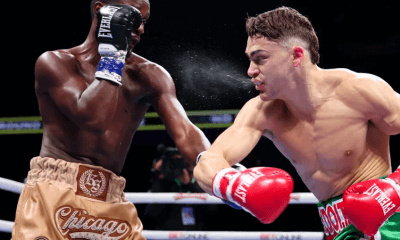
 Featured Articles1 week ago
Featured Articles1 week agoOscar Duarte and Regis Prograis Prevail on an Action-Packed Fight Card in Chicago
-
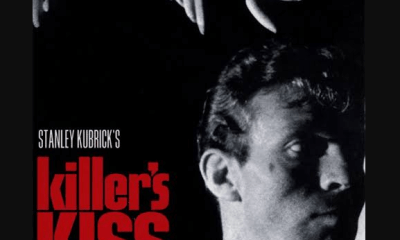
 Featured Articles4 days ago
Featured Articles4 days agoThe Hauser Report: Cinematic and Literary Notes
-

 Featured Articles4 weeks ago
Featured Articles4 weeks agoResults and Recaps from NYC where Hamzah Sheeraz was Spectacular
-
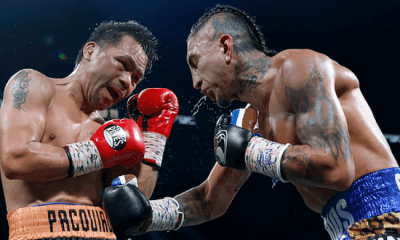
 Featured Articles3 weeks ago
Featured Articles3 weeks agoManny Pacquiao and Mario Barrios Fight to a Draw; Fundora stops Tim Tszyu
-
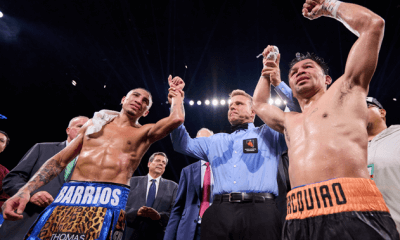
 Featured Articles3 weeks ago
Featured Articles3 weeks agoArne’s Almanac: Pacquiao-Barrios Redux
-

 Featured Articles2 weeks ago
Featured Articles2 weeks agoRemembering Dwight Muhammad Qawi (1953-2025) and his Triumphant Return to Prison
-
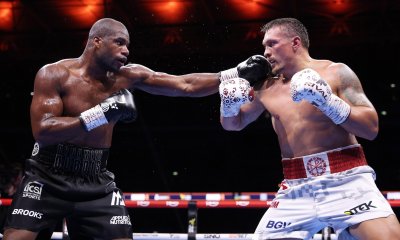
 Featured Articles3 weeks ago
Featured Articles3 weeks agoOleksandr Usyk Continues to Amaze; KOs Daniel Dubois in 5 One-Sided Rounds














